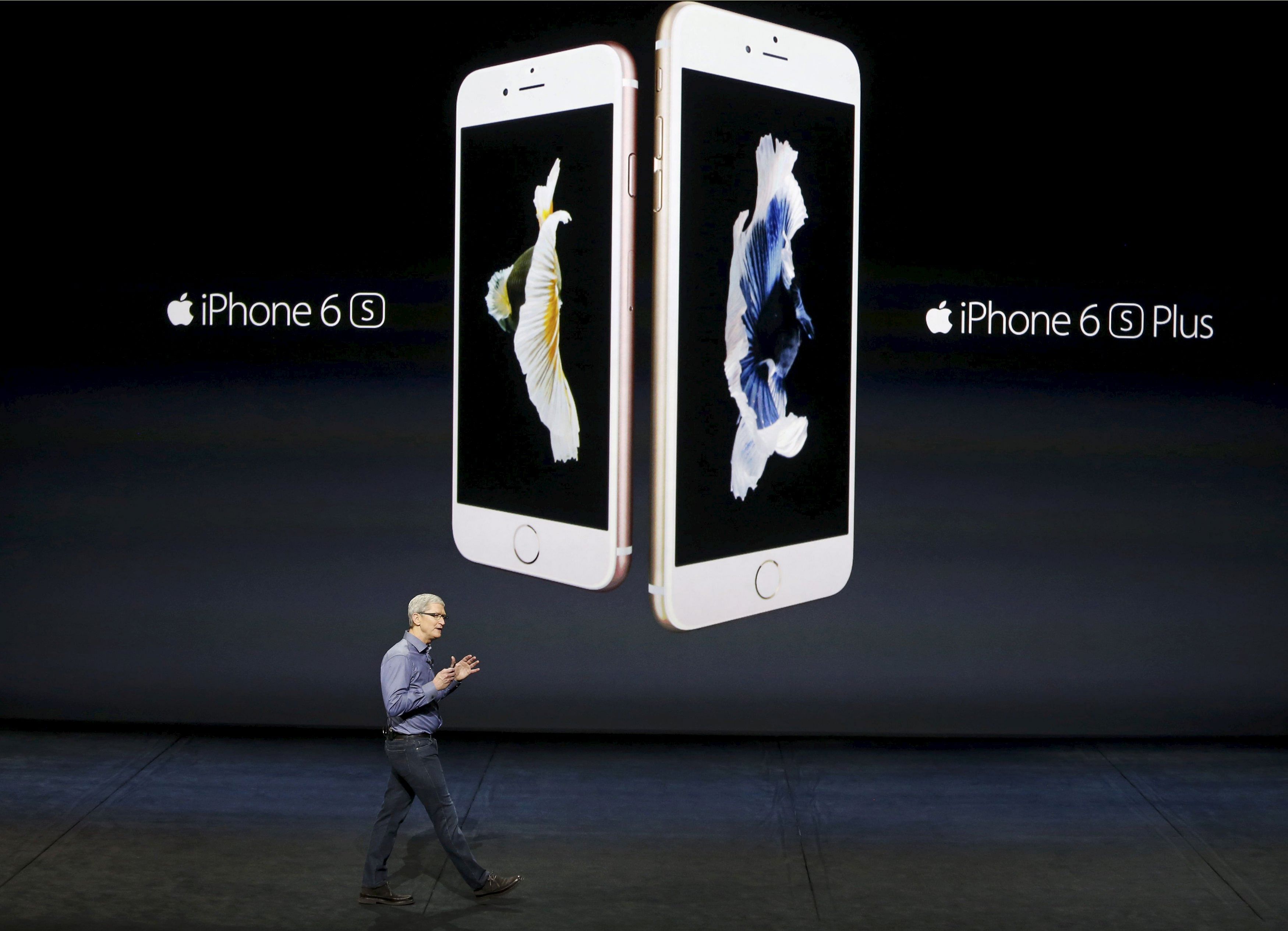
Design
The two new iPhones look exactly like their predecessors. But they are now built with structurally-stronger 7000 Series aluminium.
A new rose gold model joins the existing space grey, silver and gold models (gold is now not available for existing iPhone 6 and 6 Plus). It is a finish that looks more pink than gold.
Both iPhones are 0.2mm thicker than their predecessors. They are also heavier, with the iPhone 6s putting on 14g, and the iPhone 6s Plus gaining 20g. But they can still be used with iPhone 6 and 6 Plus cases.
-
Apple iPhone 6s
-
Tech specs
Price: $1,048 (16GB), $1,218 (64GB), $1,388 (128GB)
Processor: A9 chip with 64-bit architecture with embedded M9 motion coprocessor
Screen: 4.7-inch Retina HD display with 3D Touch; 1,334 x 750 pixels
Cameras: 12-megapixel rear camera, 5-megapixel front camera
Weight: 143g
-
Rating
Features 4/5
Design 5/5
Performance 5/5
Battery life 3/5
Value for money 4/5
Overall 4/5
-
Apple iPhone 6s Plus
-
Tech specs
Price: $1,218 (16GB), $1,388 (64GB) $1,558 (128GB)
Processor: A9 chip with 64-bit architecture with embedded M9 motion coprocessor
Screen: 5.5-inch Retina HD display with 3D Touch; 1,920 x 1,080 pixels
Cameras: 12-megapixel rear camera, 5-megapixel front camera
Weight: 192g
-
Rating
Features 4/5
Design 5/5
Performance 5/5
Battery life 4/5
Value for money 4/5
Overall 4/5 (ST Digital Editor's Choice)
When you hold the new iPhones in your hands, you will not really feel or sense the increase in thickness or weight. Both are still great to hold and handle, with the smaller model more suited for one-hand use.
Speed
With an upgraded 64-bit A9 chip, both iPhones ran faster than their predecessors.
In the Geekbench 3 benchmark tests, the iPhone 6s scored 2,535 (single-core) and 4,410 (multi-core), while the iPhone 6s Plus scored 2,526 (single-core) and 4,410 (multi-core). These results are around 50 per cent faster than the previous models.
Where it took 9sec to load Infinity Blade III on the previous iPhones, both new iPhones loaded the game in around 7.7sec. Graphics-intensive games such as Implosion played smoothly without lag.
Both iPhones use the second-generation Touch ID that is supposed to be better and faster. It works even with moist fingers and logs into the Home Screen a split-second faster than with the previous iPhones.
Siri
The voice command "Hey, Siri" is now recognised without requiring the iPhones to be plugged to a power source, thanks to the new embedded M9 co-processor. When you set up the phone initially, you will be asked to say a few sentences, such as "Hey Siri, how's the weather today?". This is so the phone will only recognise your voice. I found that Siri has become more accurate as a result.
Display with 3D Touch
Apple did not increase the new iPhones' display size and screen resolution. A higher-resolution display is probably more suited for viewing the 4K videos that the new iPhones are capable of shooting.
What has changed with the display is the addition of the 3D Touch feature, in which the screen can sense how hard you are pressing on it.
This feature allows for primarily two functions, which Apple calls 'Peek and Pop' and 'Quick Actions'.
Peek and Pop lets you preview content without opening a message or email. For example, press lightly on an email to see the content and let go if the content does not interest you. It also lets you preview photos by lightly pressing the thumbnail image while still in camera mode. You can swipe left to review the photos. Just let go your finger to return to taking photos.
Quick Actions works like the regular right mouse click. With supported apps in the Home Screen, it will call up a shortcut with different options. For example, press hard on the Camera app icon and you will feel a haptic feedback, followed by the appearance of a window showing options like Take Selfie or Record Video.
It all feels very intuitive and I got the hang of how much force to apply with just a few tries.
The feature worked like a charm even after I installed screen protectors.
Camera and Live Photos

Selfie lovers will like that the front-facing camera has been upgraded to 5 megapixels (from 1.2-megapixel previously). This camera uses the phone's display as a flash, a feature which Apple coins Retina flash.

There is a new camera function called Live Photos in both iPhones. It is enabled by default in the camera but you can disable it if you prefer so. When you take a photo, you get one still image, as well as animated footage - or 'moments' - spanning 1.5sec before and after the picture was taken. During preview on the phone, just press a little harder on the screen to see those moments.
You might find your initial attempts of this function to be quite hilarious though, as the ending moments tend to be when you put down the phone. The trick is to wait for the word "Live" on the camera app to disappear before you put down the phone.
Pictures and videos shot by both iPhones are excellent, with crisp details and minimal noise artifacts. And unlike some smartphones, images are not marred by overzealous sharpening.
To compare the cameras of both phones, I used both to take a series of the same scenes. Images taken by the iPhone 6s Plus showed marginally more accurate colours and exposure levels.

Battery life
To stress-test the battery, I looped a 720p video at full brightness and full volume, and with Wi-Fi on. The iPhone 6s lasted 6hr 50min, while the iPhone 6s Plus lasted 7hr 10min. The iPhone 6s lasted around the same time as the iPhone 6, while the iPhone 6s Plus lasted 25min less than its predecessor. Under normal use, both phones should be able to last a working day.
Verdict
If you are still using iPhone 5s, you definitely have to upgrade to the Apple iPhone 6s or iPhone 6s Plus. Even if you are using the previous models, the 3D Touch feature and better cameras are well worth the upgrade.

